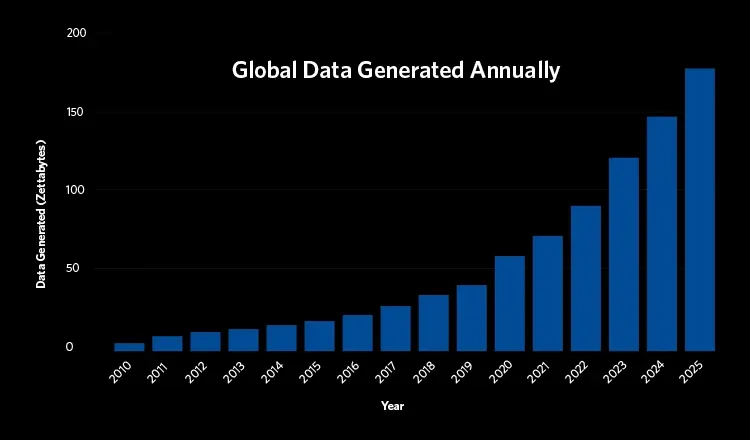There was a phrase that was popular in the technology circles a little more than a decade ago. The Internet-of-Things (IoT) was projected by many to be a monumental transformation for society. Recently, the use of this has died off.
Does that mean IoT is dead? No. We saw something similar on a number of occasions.
Going back to when the Internet started to become commonplace (in the 1990s), the phrase was "information superhighway". Naturally, this is no longer utilized yet the use of the Internet did not parallel the phrase.
We can say the same of "Big Data". Most are aware of the volumes of data that is produced. Nevertheless, how often do people write or talk about Big Data in the sense it was used around 2010? If anything, we simply call it data.
It is the driver of the future. We are looking at success of organizations being those that are data driven.

Image generated by Grok
The AI Age: A World Driven By Data
Phil Beisel was one of the first Connect Car engineers at Rivian. He was the individual that headed up the team which developed Rivian Cloud. His job was to capture all the data that given off in the vehicle.
When he started in 2017, the goal was to simply capture the data. This was difficult since telecommunication systems had a lot of dead spots. Consider some of the areas cars travel, like through mountains, where signals are difficult. This was a challenge that was confronted.
The situation was further complicated by the traditional "Big Data" problem. How does a company process this? The explosion in neural networks is a result of this dilemma. These are inherently data driven, tossing off models of what is processed. This was a gold mine for companies.
Of course, we have seen the explosion of many forms of AI, including generative AI which morphed into applications such as chatbots and image generators. This is expanding into capabilities such as Tesla's FSD, which serve a specific purpose.
At the core is data.
Automobiles are massive data generators. Everything can be captures from the number of revolutions on the tire to the starts on the battery. Energy, temperature and speed every present in every moving vehicle.
This is not only true for vehicles.
Data Is Everywhere
The AI age is possible simply due to the fact that data is everywhere. Consider, for a second, the amount that your brain processes.
We can look at this as a data center. Each of us processes trillions of transactions per day. Our eyes are taking in every single bit of information we see. Most of it falls into what Carl Jung termed the unconscious. We forget (overlook) the vast majority of what we see (and experience). Computers do not fall victim to this.
A camera will record everything. There is no "focus". With our eyes, when looking at the television, we will hone in on the screen. The stand that it is sitting on is basically ignored along with the wall behind it. Our attention remains until it shift, for example the cat jump up.
This bodes well for the future and also frames the exponential nature of things.
When training AI models, more data is generally better. To uncover complex relationships within the data— something only AI can achieve— you need as much information as possible. While AI training might appear to function like "data compression" (and in a way, it does), you can't simply discard the raw data. The original data is often crucial for further analysis and answering unforeseen questions.
Real world data is going to be explosive. Companies that get a start on this will be well ahead of everyone else.
Many surmise we will run out of data. This could be the case if limited solely to Internet. However, when we factor in data from IoT, i.e. robots, cars, and anything else moving around, we see the explosiveness.
This will only feed more data in, generating much greater output.
It compounds when we start to measure the data. In other words, the act of counting generates data that becomes part of the training of the model.
The unfolding future is a rather simple process. As AI driven systems expand, the concept of data simply takes on greater value.
It is easy to find these charts online. While the numbers might vary depending upon what is measured, the general trend looks the same.

Source